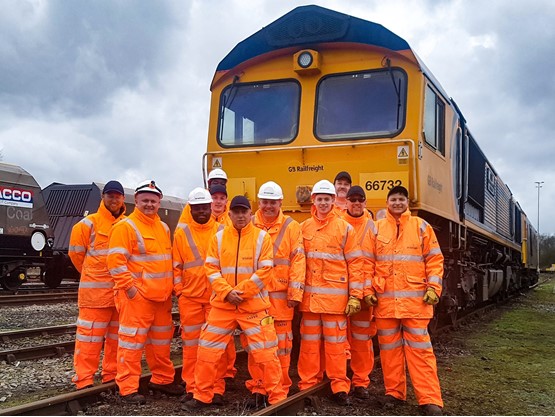The UK railway system is one of the oldest and most complex in the world, with a rich history of innovation and a rigorous framework of standards that ensure its safe and efficient operation. For newcomers to the field or those simply curious about how the railways are managed, understanding these standards is crucial. This article will provide a comprehensive guide to UK railway standards, offering insights into their development, importance, and application.
What Are Railway Standards?
Railway standards are a set of guidelines and regulations that govern the design, construction, operation, and maintenance of railway systems. They cover a broad range of aspects including safety, performance, engineering, and operational procedures. In the UK, these standards are essential for ensuring that the railways operate smoothly and safely, while also complying with legal and environmental requirements.
Historical Background
The origins of railway standards in the UK can be traced back to the early 19th century, during the birth of the railway industry. The first standards were informal and often based on the practices of individual railway companies. As the industry grew, the need for formalized standards became evident to ensure consistency and safety across the network.
By the late 19th and early 20th centuries, organizations like the Railway Clearing House and the British Standards Institution (BSI) began to play a role in setting standards. The establishment of the Health and Safety Executive (HSE) and the Office of Rail and Road (ORR) further formalized and enforced these standards, leading to a more structured and regulated approach.
Key Organizations Involved
Several key organizations are responsible for developing, maintaining, and enforcing railway standards in the UK:
- Office of Rail and Road (ORR): The ORR is the independent regulator for the railways and road transport in Great Britain. It oversees safety, economic performance, and efficiency, ensuring that railway operators comply with standards.
- Network Rail: As the owner and operator of the railway infrastructure, Network Rail is responsible for maintaining and upgrading the rail network. It develops and implements technical standards for infrastructure.
- British Standards Institution (BSI): BSI develops and publishes standards for various industries, including railways. These standards cover everything from safety to technical specifications.
- Rail Safety and Standards Board (RSSB): The RSSB facilitates the development of safety and operational standards and promotes best practices across the industry.
Categories of Railway Standards
UK railway standards cover various categories, each addressing different aspects of railway operation:
- Safety Standards: These are perhaps the most critical standards, designed to prevent accidents and ensure the safety of passengers and staff. They include protocols for signaling, track integrity, train control systems, and emergency procedures.
- Technical Standards: These standards pertain to the technical specifications of railway equipment and infrastructure. They include standards for track construction, rolling stock (trains), signaling systems, and electrification.
- Operational Standards: These guidelines govern the day-to-day operations of the railway system. They cover aspects such as train scheduling, maintenance procedures, and customer service.
- Environmental Standards: With growing awareness of environmental issues, standards have been developed to minimize the environmental impact of railway operations. These include guidelines on noise reduction, energy efficiency, and pollution control.
How Standards Are Developed
The development of railway standards involves a collaborative process that includes industry experts, stakeholders, and regulatory bodies. Here’s a general overview of how standards are created:
- Identifying Needs: The process often begins with identifying a need for a new standard or a revision of an existing one. This can be driven by technological advancements, safety concerns, or regulatory changes.
- Consultation: Draft standards are usually subjected to a consultation process involving industry experts, operators, and other stakeholders. This helps gather feedback and ensure that the standards are practical and effective.
- Drafting and Review: Based on the feedback, a draft standard is developed. This draft undergoes several rounds of review and revision before it is finalized.
- Publication and Implementation: Once approved, the standard is published and disseminated. Railway operators and other relevant parties are then required to implement the standard in their operations.
Importance of Railway Standards
The importance of railway standards cannot be overstated. They serve several critical functions:
- Safety: Ensuring the safety of passengers, staff, and the public is the top priority. Standards help prevent accidents and ensure that safety protocols are consistently applied.
- Consistency: By providing a uniform set of guidelines, standards ensure that different parts of the railway network operate in harmony. This consistency is crucial for maintaining an efficient and reliable service.
- Efficiency: Standards help optimize the performance of railway operations, reducing delays and improving service quality. They also facilitate the integration of new technologies and practices.
- Compliance: Adhering to standards ensures compliance with legal and regulatory requirements, helping avoid legal issues and potential penalties.
Challenges and Future Directions
While railway standards play a crucial role, there are ongoing challenges. The rapid pace of technological change, the need for increased capacity, and environmental concerns require continuous updates and adaptations to standards. Additionally, balancing safety with innovation and efficiency is a constant challenge for the industry.
Looking to the future, the UK railway sector is likely to see further advancements in technology, including the integration of digital systems and automation. These developments will necessitate ongoing revisions to existing standards and the creation of new ones to address emerging challenges and opportunities.
Conclusion
Understanding UK railway standards provides valuable insight into the complexities of managing one of the world’s most extensive rail networks. These standards ensure the safety, efficiency, and reliability of railway operations, making them essential for both industry professionals and passengers alike. As the railway industry continues to evolve, staying informed about these standards will remain crucial for navigating the future of rail transport in the UK.
